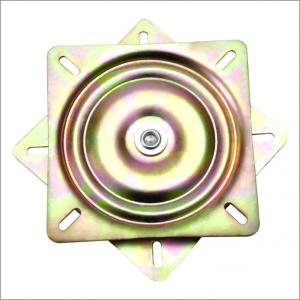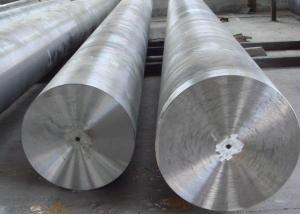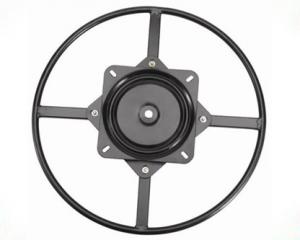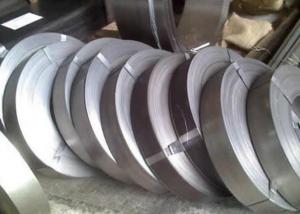Building Materials Reinforcing Deformed Steel Bar
- Loading Port:
- China main port
- Payment Terms:
- TT OR LC
- Min Order Qty:
- 30 m.t.
- Supply Capability:
- 10000 m.t./month
OKorder Service Pledge
OKorder Financial Service
You Might Also Like
Item specifice
Building Materials Reinforcing Deformed Steel Bar
Product Information:
Rebar is a common steel reinforcing bar, used in reinforced concrete and reinforced masonry structures. It is formed from mild steel, and is given ribs for better frictional adhesion to the concrete. The Rebar is an iron rod , a weldable plain reinforcing steel bar, and can be used as well for steel meshes
In order to avoid farthest the tax in China, and to provide for our clients the goods with prime quality and more reasonable price, we have registered Sino Golden Sunshine (group) Stock CO.,LTD. in Hong Kong as our trading platform for overseas customers.
We can deliver our cargos to Tianjin Port China within 20 days after signing the contract and receiving the L/C or the payment by T/T from the customer. At the same time, we have good cooperation with many powerful shipping companies and forwarders , which guarantees that the cargos will be loaded on time and will arrive at the foreign port designated by our customers in time
Chemical Composition(%)
| C | Si | Mn | P | S | B | Cr | Cu | V | Mo | CEQ |
| 0.19 | 0.13 | 0.41 | 0.037 | 0.018 | 0.0015 | 0 | 0 | 0 | 0 | 0.26 |
Product Overviews:
| Product Name | Typical Grades | Diameter(mm) | Standard adopted |
| Carbon Steel | 20 (1020/S20C/C22) | Ø16-Ø300 | GB/SAE/JIS/DIN |
| 40 (1040/S40C/C40) | |||
| 45 (1045/S45C/C45) | |||
| Bearing Steel | GCr9 (51100/SUJ1) | Ø12-Ø250 | |
| GCr15 (52100/SUJ2/100Gr6) | |||
| GCr9SiMn (A485-Gr.1/SUJ3) | |||
| Cr-Mo Steel | 20Cr (5120/SCr420H/20Cr4) | Ø12-Ø250 | |
| 40Cr (5140/SCr440/41Cr4) | |||
| 42CrMo(4140/SCM440/42CrMo4) | |||
| Gear Steel | 20CrNiMo | Ø16-Ø600 | |
| 20CrMn(5115/SMnC420/20MnCr5) | |||
| 20CrNiMo(8620/SNCM220/20CrMiMo2) |
Product Show:
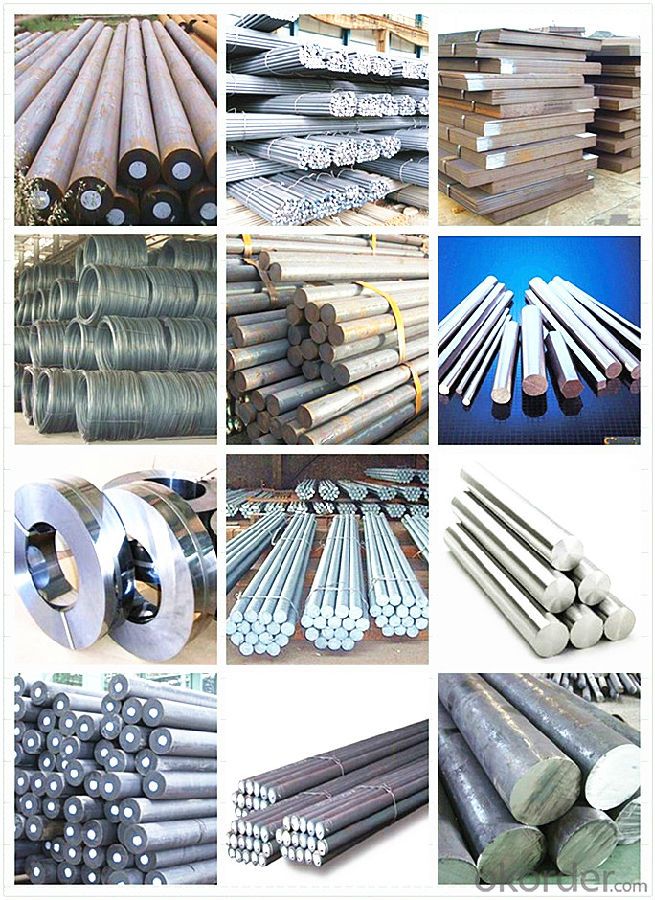
Our Advantages:
· Industry experience over 20 years.
· Shipment of goods -More than 70 countries worldwide.
· The most convenient transport and prompt delivery.
· Competitive price with best service.
· High technical production line with top quality products.
· High reputation based on best quality products.
With our experienced, enthusiastic and dynamic staffs, we assure to bring you the products with best quality, reasonable prices and good after-sales services under the motto: Friends First, Business After.
Communication, Experience, Expertise and Best efforts are our Promises to you.
- Q:What are the main challenges in welding special steel?
- The main challenges in welding special steel typically include issues such as high heat input requirements, susceptibility to cracking, and the need for precise preheating and post-weld heat treatment. Additionally, the presence of alloying elements in special steel can make it more difficult to achieve the desired mechanical properties and require careful selection of filler materials.
- Q:What are the requirements for special steel used in telecommunications infrastructure?
- The requirements for special steel utilized in telecommunications infrastructure encompass several aspects: 1. Elevated strength: To withstand the substantial loads and stresses imposed on the structures, it is essential for the special steel employed in telecommunications infrastructure to possess a high tensile strength. This guarantees the stability and security of the infrastructure. 2. Resistance to corrosion: Given the potential exposure to diverse environmental conditions such as moisture and chemicals, it is of utmost importance for the special steel to exhibit exceptional corrosion resistance. This safeguard protects the infrastructure from rust and deterioration, thereby extending its lifespan. 3. Favorable weldability: The special steel employed in telecommunications infrastructure should possess good weldability to facilitate the construction and installation processes. This enables the seamless joining of various components, thereby ensuring a sturdy and dependable structure. 4. Durability: The special steel must demonstrate the ability to endure the harsh conditions it may face throughout its lifetime. It should exhibit high durability to resist fatigue, impact, and other external factors that could potentially compromise the integrity of the infrastructure. 5. Lightweight nature: In addition to strength, special steel utilized in telecommunications infrastructure should also possess a lightweight quality. This characteristic enables easier transportation, handling, and installation of the components, thereby reducing costs and construction time. 6. Fire resistance: The special steel utilized in telecommunications infrastructure should possess commendable fire resistance properties to prevent the spread of fire and ensure the safety of the infrastructure and its surroundings. 7. Electrical conductivity: Telecommunications infrastructure often necessitates electrical grounding and bonding. Consequently, the special steel employed in these applications should exhibit favorable electrical conductivity properties to ensure effective grounding and minimize electrical interference. Meeting these requirements guarantees that the special steel employed in telecommunications infrastructure can provide the necessary structural integrity, longevity, and performance required to support reliable and efficient communication networks.
- Q:What are the main advantages of using special steel in the construction of bridges?
- The main advantages of using special steel in the construction of bridges are its high strength-to-weight ratio, excellent corrosion resistance, and durability. Special steel possesses superior mechanical properties, allowing for the construction of lighter and more efficient bridge structures. It also offers enhanced resistance to environmental factors like moisture, temperature variations, and chemical exposure, leading to longer service life and reduced maintenance costs. Additionally, special steel facilitates the use of innovative and complex bridge designs, enabling architects and engineers to create unique and aesthetically pleasing structures.
- Q:What are the main characteristics of heat-resistant steel forgings?
- High-temperature applications can benefit from the use of heat-resistant steel forgings due to their distinct characteristics. Firstly, these forgings possess exceptional resistance to oxidation and corrosion, enabling them to maintain their mechanical properties even under elevated temperatures. This resistance is achieved by incorporating alloying elements such as chromium, nickel, and molybdenum, which form a protective oxide layer on the steel's surface. Secondly, heat-resistant steel forgings demonstrate remarkable strength and toughness when exposed to high temperatures. This is crucial for applications that subject the material to mechanical stress and thermal cycling, such as gas turbines, power plants, and aerospace engines. The combination of high strength and toughness ensures that the forgings can endure harsh operating conditions without deformation or failure. Another significant characteristic of heat-resistant steel forgings is their ability to retain hardness and dimensional stability even after prolonged exposure to high temperatures. This is accomplished through meticulous alloying and heat treatment processes, optimizing the steel's microstructure. As a result, the material possesses a fine grain structure and high uniformity, enhancing its resistance to thermal fatigue and creep. Moreover, heat-resistant steel forgings exhibit good thermal conductivity, facilitating efficient heat transfer and dissipation. This is particularly important in applications where heat generation needs effective management to prevent overheating and damage to surrounding components. Lastly, heat-resistant steel forgings can be easily machined and fabricated into intricate shapes, making them versatile and suitable for various applications. They can be forged, machined, and welded without significant loss of mechanical properties, making them ideal for manufacturing components with complex designs and high precision requirements. In conclusion, the main characteristics of heat-resistant steel forgings include excellent resistance to oxidation and corrosion, high strength and toughness at high temperatures, dimensional stability and hardness retention, good thermal conductivity, and ease of machining and fabrication. These characteristics make heat-resistant steel forgings indispensable in industries that require reliable and durable materials in extreme heat conditions.
- Q:What are the different surface hardening techniques for special steel?
- To enhance the mechanical properties and improve the wear resistance of special steel, there exists a range of surface hardening techniques that can be employed. These techniques encompass: 1. Case hardening: Through diffusion, carbon or nitrogen is introduced into the steel surface. By subjecting the steel to an environment rich in carbon or nitrogen, the atoms disseminate into the surface layer, resulting in the creation of a hardened case while maintaining a resilient core. 2. Nitriding: The process of introducing nitrogen into the steel surface to enhance its hardness is known as nitriding. By placing the steel in an environment abundant in nitrogen at elevated temperatures, a hardened surface layer is formed, exhibiting improved resistance to wear and corrosion. 3. Carburizing: Carbon is introduced into the steel surface through carburizing. By heating the steel in an environment rich in carbon, the carbon atoms diffuse into the surface layer, leading to the development of a hardened case with heightened hardness and wear resistance. 4. Induction hardening: Utilizing an induction coil, induction hardening is a localized technique for surface hardening. The steel is heated using the induction coil and then swiftly quenched, resulting in a hardened surface layer characterized by high hardness and enhanced wear resistance. 5. Flame hardening: Flame hardening is an alternative localized method for surface hardening. The steel surface is heated using a high-temperature flame and swiftly quenched. This technique generates a hardened surface layer with increased hardness and resistance to wear. 6. Laser hardening: Laser hardening is a precise and localized surface hardening technique. By employing a laser beam to heat the desired area of the steel, followed by rapid quenching, a hardened surface layer with enhanced mechanical properties is formed. By employing these surface hardening techniques, special steel can experience significant improvements in durability, strength, and resistance to wear and corrosion, making it highly suitable for diverse industrial applications. The selection of the most suitable technique is contingent upon factors such as the desired level of hardness, the complexity of the steel component, and the specific requirements of the application.
- Q:How does special steel contribute to weight reduction in manufacturing?
- Special steel, engineered specifically for various manufacturing applications, possesses certain characteristics that make it suitable. One major advantage of special steel is its ability to reduce weight in manufacturing processes. Industries that prioritize weight reduction, such as automotive, aerospace, and construction, often utilize special steel. This is because special steel has a high strength-to-weight ratio, meaning it can provide the necessary strength and performance while being lighter compared to other materials. Using special steel allows companies to achieve weight reduction in multiple ways. Firstly, the lightweight nature of special steel enables the production of significantly lighter components and structures compared to conventional materials. This reduction in weight offers several benefits, including improved fuel efficiency in automobiles, increased payload capacity in aircraft, and easier handling and installation in construction projects. Moreover, special steel's high strength-to-weight ratio allows manufacturers to design and produce thinner yet equally strong components. This not only reduces overall weight but also optimizes material usage, leading to cost savings and a more sustainable manufacturing process. Additionally, special steel's unique properties, such as excellent formability and weldability, facilitate the creation of complex and intricate designs that further contribute to weight reduction. This versatility enables the production of lightweight components with intricate shapes and structures, enhancing overall performance and functionality. In conclusion, special steel is crucial in reducing weight during manufacturing processes. Its high strength-to-weight ratio, lightweight nature, excellent formability, and weldability enable the production of lighter components and structures. By utilizing special steel, industries can achieve improved efficiency, performance, and sustainability in their manufacturing operations.
- Q:How does special steel perform in abrasive wear conditions?
- Special steel is designed specifically to excel in conditions of abrasive wear, thanks to its unique composition and manufacturing process. This makes it highly resistant to the harmful effects of abrasion. The inclusion of alloying elements like chromium, manganese, and molybdenum in special steel significantly boosts its hardness and toughness. These elements aid in the formation of carbides within the steel matrix, which serve as barriers against abrasion. The carbides effectively withstand the forces exerted by abrasive particles, preventing them from inflicting significant damage on the steel surface. Additionally, special steel undergoes specialized heat treatment processes like quenching and tempering, further enhancing its resistance to abrasive wear. These processes not only increase the steel's hardness but also enhance its overall toughness and durability. As a result, special steel can withstand high levels of abrasion without experiencing substantial wear or deterioration. Moreover, special steel exhibits excellent corrosion resistance, in addition to its exceptional mechanical properties. This is achieved by incorporating elements such as chromium, which creates a protective oxide layer on the steel surface. The oxide layer acts as a barrier, preventing corrosive substances from reaching the underlying steel and causing further harm. In conclusion, special steel performs exceptionally well in conditions of abrasive wear. Its distinctive composition, heat treatment processes, and corrosion resistance properties make it an ideal material for applications where abrasion is a major concern. Whether in mining, manufacturing, or other industries prone to abrasive wear, special steel offers superior performance and extended lifespan, ensuring optimal efficiency and cost-effectiveness.
- Q:What are the different surface modification techniques used for special steel?
- Some of the different surface modification techniques used for special steel include heat treatment, electroplating, coatings, and nitriding. These techniques are utilized to enhance the steel's hardness, corrosion resistance, wear resistance, and overall performance in various applications.
- Q:How does special steel contribute to improving product safety?
- Special steel contributes to improving product safety in several ways. Firstly, special steel is known for its exceptional strength and durability, making it highly resistant to corrosion, wear, and impact. This robustness ensures that products made with special steel can withstand various external forces and environmental conditions, reducing the likelihood of structural failures or accidents. Additionally, certain types of special steel possess unique properties, such as heat resistance or high conductivity, which are crucial for applications in industries like aerospace and automotive, where safety is of utmost importance. Moreover, special steel undergoes rigorous testing and quality control processes to ensure its compliance with safety standards and regulations, guaranteeing the reliability and consistency of the final products. Overall, the utilization of special steel in manufacturing enhances product safety by providing superior strength, resilience, and adherence to safety guidelines.
- Q:Can special steel be used in the production of bearings?
- Yes, special steel can be used in the production of bearings. Special steel alloys, such as stainless steel or chrome steel, offer enhanced properties like corrosion resistance, high strength, and durability, making them suitable for bearing applications in various industries.
1. Manufacturer Overview |
|
|---|---|
| Location | |
| Year Established | |
| Annual Output Value | |
| Main Markets | |
| Company Certifications | |
2. Manufacturer Certificates |
|
|---|---|
| a) Certification Name | |
| Range | |
| Reference | |
| Validity Period | |
3. Manufacturer Capability |
|
|---|---|
| a)Trade Capacity | |
| Nearest Port | |
| Export Percentage | |
| No.of Employees in Trade Department | |
| Language Spoken: | |
| b)Factory Information | |
| Factory Size: | |
| No. of Production Lines | |
| Contract Manufacturing | |
| Product Price Range | |
Send your message to us
Building Materials Reinforcing Deformed Steel Bar
- Loading Port:
- China main port
- Payment Terms:
- TT OR LC
- Min Order Qty:
- 30 m.t.
- Supply Capability:
- 10000 m.t./month
OKorder Service Pledge
OKorder Financial Service
Similar products
New products
Hot products
Related keywords
























